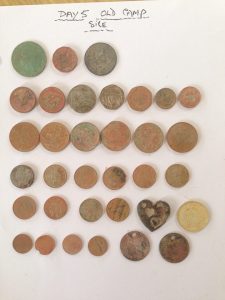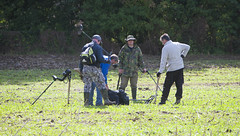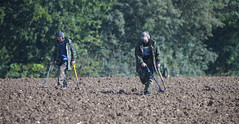On this day in history… 24th December
December 24, 2013 Leave a comment
Christmas Eve is a major date in most people’s calendars, whether or not you are celebrating a traditional Yuletide. Whilst for many, it might be fair to say that the most important 24th December took place all those years ago in a manger, since then there have been numerous events, births and deaths on the same date that have also been of historical interest.
In 1814, for example, the Treaty of Ghent was signed, which ended the war of 1812 in which the US and the UK fought each other over territory and trade restrictions. A century later in 1914 and Christmas Eve saw the beginning of the famous ‘Christmas Truce’ during World War I in which soldiers previously fighting along the Western Front took a break to exchange Christmas pleasantries and even gifts. During World War II a number of important events took place on 24th December, including the conquering of Kuching by Japanese forces in 1941 and the appointment of U.S. General Dwight D. Eisenhower as the Supreme Allied Commander in 1943. In 1968 on Christmas Eve Apollo 8 entered orbit around the moon, with the crew becoming the first human beings in history to do so, and in 1980 on this day, residents living in and around ‘Britain’s Roswell’ (Rendlesham Forest, Suffolk) reported unexplained lights that many attributed to UFOs.
On 24th December 1745, Benjamin Rush who was an American physician and signer of the United States Declaration of Independence was born, and on the same day in 1894 both the French pilot Georges Guynemer and Jack Thayer, who survived the sinking of the Titanic, were born. Max Miedinger, who created the much loved Helvetica font was born in 1910 on Christmas Eve and the legendary Ava Gardner arrived in 1922. British politician Ed Milliband was introduced to the world for the first time on 24th December 1969, with the singer Ricky Martin following in 1971 and Estonian triple and long jumper Jaanus Uudmäe in 1980. In terms of those who have passed on Christmas Eves over the years, the English composer John Dunstaple died on Christmas Eve in 1453 and François Darlan in 1942 (he was a French navy officer and the 122nd Prime Minister of France). Burt Baskin, founder of Baskin Robbins ice cream died on this day in 1967, followed later by the Nobel Prize laureate Harold Pinter in 2008.
Anyone who loves to metal detect naturally has an interest in history and these events show just how much has happened on this date over the years. It makes you wonder what we can expect from Christmas Eves to come…

 In the
In the 

